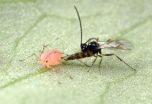(Press-News.org) A compound in citrus fruits may reduce your stroke risk, according to research reported in Stroke: Journal of the American Heart Association.
This prospective study is one of the first in which researchers examine how consuming flavonoid subclasses affects the risk of stroke. Flavonoids are a class of compounds present in fruits, vegetables, dark chocolate and red wine.
"Studies have shown higher fruit, vegetable and specifically vitamin C intake is associated with reduced stroke risk," said Aedín Cassidy, Ph.D., the study's lead author and professor of nutrition at Norwich Medical School in the University of East Anglia in Norwich, United Kingdom. "Flavonoids are thought to provide some of that protection through several mechanisms, including improved blood vessel function and an anti-inflammatory effect."
Cassidy and colleagues used 14-years of follow-up data from the Nurse's Health Study, which included 69,622 women who reported their food intake, including details on fruit and vegetable consumption every four years. Researchers examined the relationship of the six main subclasses of flavonoids commonly consumed in the U.S. diet — flavanones, anthocyanins, flavan-3-ols, flavonoid polymers, flavonols and flavones — with risk of ischemic, hemorrhagic and total stroke.
As expected, the researchers didn't find a beneficial association between total flavonoid consumption and stroke risk, as the biological activity of the sub-classes differ. However, they found that women who ate high amounts of flavanones in citrus had a 19 percent lower risk of blood clot-related (ischemic) stroke than women who consumed the least amounts.
In the study, flavanones came primarily from oranges and orange juice (82 percent) and grapefruit and grapefruit juice (14 percent). However, researchers recommended that consumers increase their citrus fruit intake, rather than juice, due to the high sugar content of commercial fruit juices.
A previous study found that citrus fruit and juice intake, but not intake of other fruits, protected against risk of ischemic stroke and intracerebral hemorrhage. Another study found no association between yellow and orange fruits and stroke risk, but did link increased consumption of white fruits like apples and pears with lower stroke risk. An additional study found that Swedish women who ate the highest levels of antioxidants – about 50 percent from fruits and vegetables – had fewer strokes than those with lower antioxidant levels.
More studies are needed to confirm the association between flavanone consumption and stroke risk, and to gain a better understanding about why the association occurs, the authors said.
###
The National Institutes of Health funded the research.
Co-authors are: Eric B. Rimm, Sc.D.; Éilis J. O'Reilly, Sc.D.; Giancarlo Logroscino, M.D., Ph.D.; Colin Kay, Ph.D.; Stephanie E. Chiuve, Sc.D.; and Kathryn M. Rexrode, M.D., M.P.H. Author disclosures are on the manuscript.
Statements and conclusions of study authors published in American Heart Association scientific journals are solely those of the study authors and do not necessarily reflect the association's policy or position. The association makes no representation or guarantee as to their accuracy or reliability. The association receives funding primarily from individuals; foundations and corporations (including pharmaceutical, device manufacturers and other companies) also make donations and fund specific association programs and events. The association has strict policies to prevent these relationships from influencing the science content. Revenues from pharmaceutical and device corporations are available at www.heart.org/corporatefunding.
NR12 – 1033 (Stroke/Cassidy)
Additional Resources:
For tools and resources on stroke, visit www.strokeassociation.org.
The Natural Beauty of Fruits and Vegetables: http://www.heart.org/HEARTORG/GettingHealthy/NutritionCenter/HealthyCooking/The-Natural-Beauty-of-Fruits-and-Vegetables_UCM_430112_Article.jsp
Eating citrus fruit may lower women's stroke risk
2012-02-24
ELSE PRESS RELEASES FROM THIS DATE:
Memory formation triggered by stem cell development
2012-02-24
Researchers at the RIKEN-MIT Center for Neural Circuit Genetics have discovered an answer to the long-standing mystery of how brain cells can both remember new memories while also maintaining older ones.
They found that specific neurons in a brain region called the dentate gyrus serve distinct roles in memory formation depending on whether the neural stem cells that produced them were of old versus young age.
The study will appear in the March 30 issue of Cell and links the cellular basis of memory formation to the birth of new neurons -- a finding that could unlock ...
Newly Sponsored Badbeat.com Player, Stavros Ioannou, Starts with Winning Streak
2012-02-24
Stavros "LOTSandLOTS" Ioannou, one of the latest up and coming poker players to be sponsored and mentored by Badbeat.com, has begun with a winning streak that started with two MTTs then, the following week, 2nd in the EUR5k guaranteed EUR50 Turbo on Poker Time and 3rd in the $10k Guaranteed $5 Rebuy on Poker Encore for $2.1k. Now bankrolled and tutored by Badbeat.com, prospects look good for the young poker player.
"My first day with Badbeat.com was a good one -- I played 6 MTTs in total and final tabled 3/6 winning two of them," said Ioannou. "My ...
Classic Maya civilization collapse related to modest rainfall reductions
2012-02-24
A new study reports that the disintegration of the Maya Civilization may have been related to relatively modest reductions in rainfall.
The study was led by Professors Martín Medina-Elizalde of the Yucatan Center for Scientific Research in Mexico and Eelco Rohling of the University of Southampton in the UK. Professor Rohling says:
"Our results show rather modest rainfall reductions between times when the Classic Maya Civilization flourished and its collapse – between AD 800-950. These reductions amount to only 25 to 40 per cent in annual rainfall. But they were large ...
Specific antipsychotic drugs increase risk of death in elderly dementia patients
2012-02-24
Nursing home residents over the age of 65 who take certain antipsychotic medication for dementia are at an increased risk of death, suggests a research paper published today on bmj.com.
The Harvard Medical School study, the largest ever undertaken among US nursing home residents, looked at 75,445 older nursing home residents from 45 US states between 2001 and 2005. All nursing home residents studied were 65 and over. Risks of mortality were looked at during a six month period.
The US Food and Drug Administration (FDA) warned in 2005 that atypical antipsychotic drugs ...
Cunning super-parasitic wasps sniff out protected aphids and overwhelm their defenses
2012-02-24
In the war between parasite and host, the parasitic wasp, Aphidius ervi, and the pea aphid, Acyrthosiphon pisum, are locked in a battle for survival. New research published in BioMed Central's open access journal BMC Biology shows that this cunning parasite sniffs out differences between protected and unprotected aphids, and alters its egg-laying strategy, in order to overwhelm aphid defenses and ensure survival of wasp offspring.
The wasp, A. ervi, lays an egg inside the pea aphid, where the egg hatches and converts the aphid's insides into a wasp nursery. The wasp ...
Pardee Homes' Crest View at Fair Oaks Ranch to Open March 3
2012-02-24
Spacious new homes on large, hillside homesites in Fair Oaks Ranch are coming to Santa Clarita at Crest View, where Los Angeles homebuilder Pardee Homes has set Saturday, March 3 for grand opening festivities. The Crest View sales center will open at 10 a.m. and home shoppers are invited to enjoy self-guided tours of 4 fully decorated model homes.
Grand opening visitors can also take in a lively session with Sandy Krogh of Culinary Consultants. Demonstrating Crest View's upscale G.E. appliance line in a model home kitchen, Sandy will present delicious and easy springtime ...
The genetic basis for age-related macular degeneration
2012-02-24
Age-related macular degeneration (AMD) is one of the leading causes of blindness worldwide, especially in developed countries, and there is currently no known treatment or cure or for the vast majority of AMD patients. New research published in BioMed Central's open access journal Genome Medicine has identified genes whose expression levels can identify people with AMD, as well as tell apart AMD subtypes.
It is estimated that 6.5% of people over age 40 in the US currently have AMD. There is an inheritable genetic risk factor but risk is also increased for smokers and ...
Lineage trees reveal cells' histories
2012-02-24
In recent years, a number of controversial claims have been made about the female mammal's egg supply – that it is renewed over her adult lifetime (as opposed to the conventional understanding that she is born with all of her eggs), and that the source of these eggs is stem cells that originate in the bone marrow. Now, Weizmann Institute scientists have disproved one of those claims and pointed in new directions toward resolving the other. Their findings, based on an original method for reconstructing lineage trees for cells, were published online today in PLoS Genetics.
The ...
Slamming the brakes on the malaria life cycle
2012-02-24
Scientists have discovered a new target in their fight against the devastating global disease 'malaria' thanks to the discovery of a new protein involved in the parasite's life cycle.
The research has uncovered a vital player in the sexual phase of the malaria parasite's reproduction which could prove an effective target for new treatments to stop the disease in its tracks.
The scientists from The University of Nottingham's School of Biology, with collaborators from the Universities of Leicester, Oxford, Imperial College London and Leiden in the Netherlands, have just ...
Protein scouts for dangerous bacteria
2012-02-24
CHICAGO --- Millions of "good" bacteria exist harmoniously on the skin and in the intestines of healthy people. When harmful bacteria attack, the immune system fights back by sending out white blood cells to destroy the disease-causing interlopers. But how do white blood cells know which bacteria are good and which are harmful?
Northwestern University Feinberg School of Medicine researchers studied one type of white blood cell known as a macrophage, which is among the immune system's first to detect and eliminate harmful bacteria. The research team, led by Christian ...



